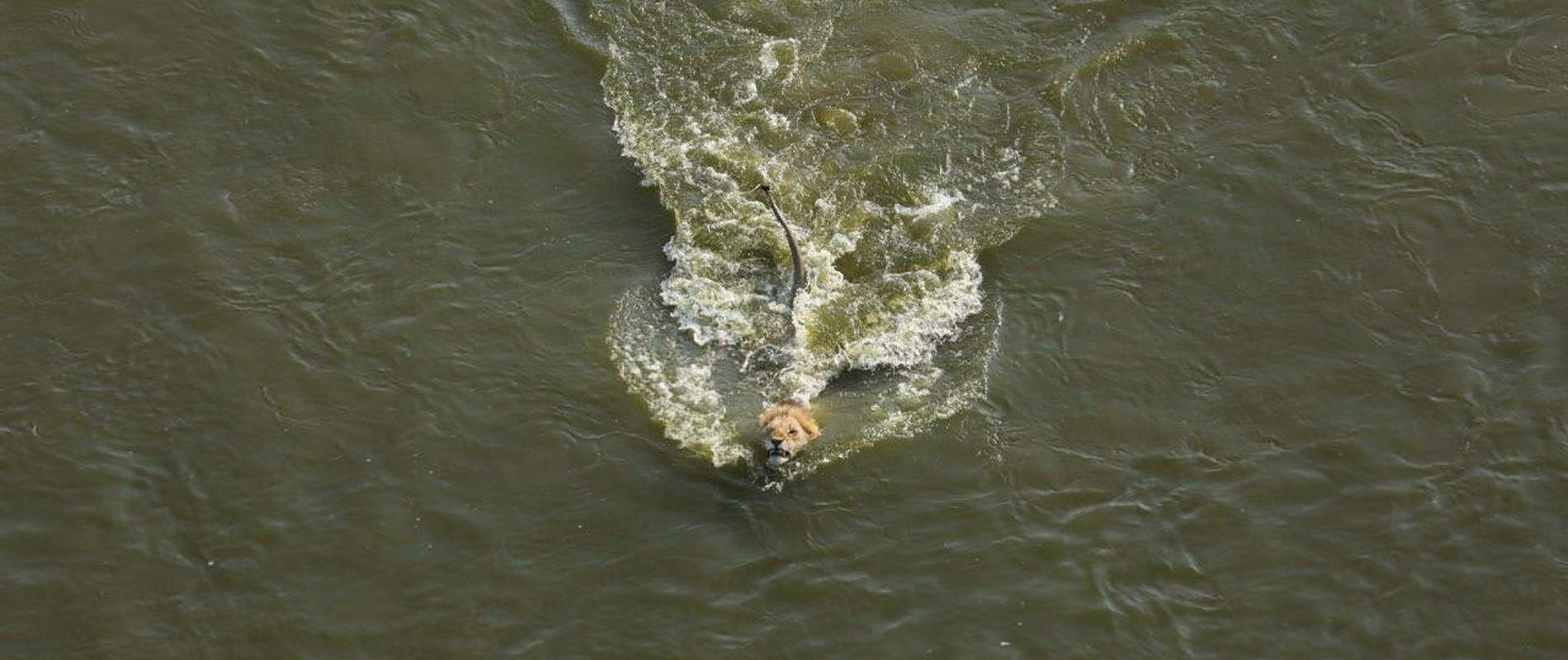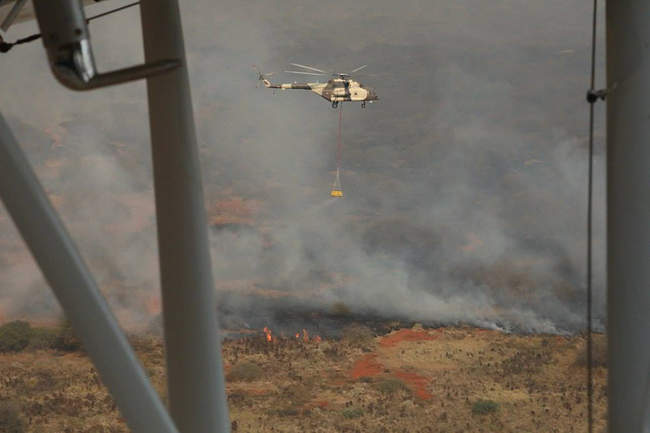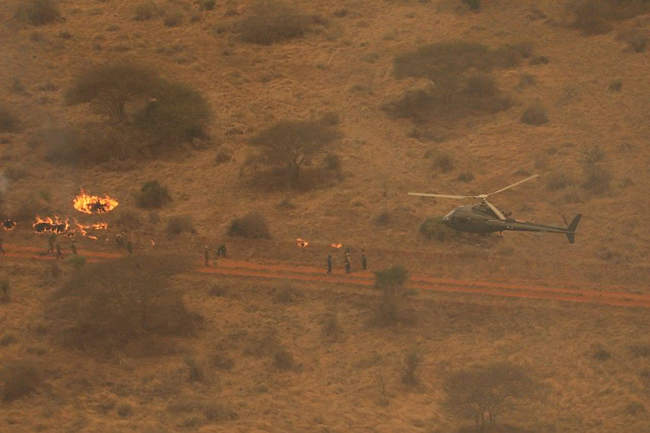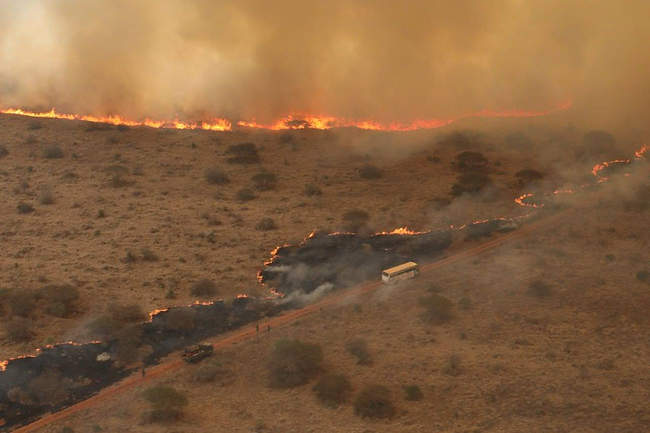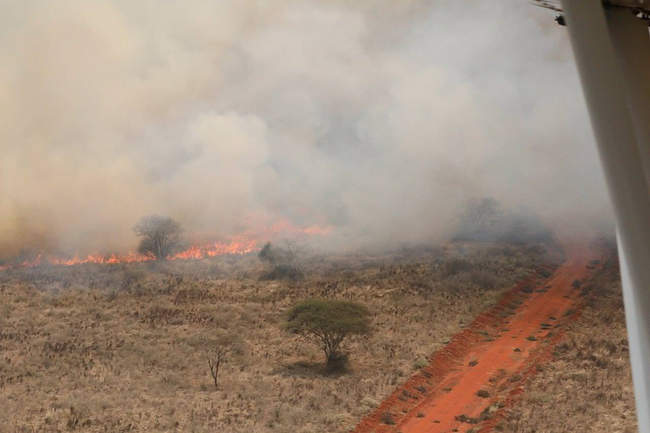It was a busy month for the Air Wing supporting firefighting efforts, as well as assisting in veterinary treatments and a major operation to translocate seven bull elephants. While for the time of year, aerial patrols revealed an uncharacteristically low amount of poaching activity.
Poaching activity has been unusually scarce for this time of year and while SWT/KWS ground teams dealt with some poaching related activity at a field level, aerial surveillance did not reveal any additional activity in the month. Illegal livestock grazing in protected areas continued in August, however, Tsavo East NP was relatively under control, except to the north, where there was a steady increase in the number and depth of incursions along the Tiva River Delta. Even accounting for this increase, livestock numbers in the area are nowhere near levels seen in previous years, which is credit to the efforts of KWS and teams on the ground to limit incursions.
In the Parks, charcoal burning continues to be limited, particularly in the SWT's areas of operation. One charcoal kiln was located on the banks of the Athi River in the Gazi area of Tsavo East NP. The only major area of concern was in the northeast corner of the National Park, near Mukomwe Hill, where there has been a recurring commercial operation taking place for the last few years.
As in July 2020, fires dedicated much of the Air Wing's efforts in August. Our pilots were heavily occupied assisting with fires that continued to ravage the Tsavo Conservation Area. Most of these fires were started deliberately either by livestock herders trying to stimulate fresh grass growth at the end of the dry season, or by arsonists with various malicious intentions.
The largest of these fires was in Tsavo West National Park: On 8th August 2020, a large fire broke out along the Maktau-Taveta road to the south of Murka. Appearing only a few kilometres from another fire that broke out a few days earlier. Upon hearing news of the fire, the SWT quickly deployed an aircraft and multiple teams to help KWS fight the fire on the ground. During the course of the day our planes, limited to 6 hours of flight time, each worked 3 shifts to cover the fire from morning until last light before having to return to base. Our ground teams remained to fight the fire, along with KWS and teams from Wildlife Works, Taita Estate, National Youth Service, and other volunteers. Fortunately, our collective efforts ultimately proved successful, and the third and final day of the operation was largely to 'mop-up' small flash points. Although this was the biggest of the fires attended to in August, several other fires consumed dozens of hours of aircraft time, with aircraft used to help coordinate firefighters on the ground and to scout for reports of fires across the ecosystem. The SWT helicopter also fought separate fires in Chyulu Hills, conducting repeated water drops using the bambi bucket to douse the flames.

Bull elephant treated for a spear would in the Maasai Mara
Three wildlife veterinary cases attended to in August required assistance from the Aerial Unit. While in a separate case in the Maasai Mara, one of our helicopters was used to dart an elephant that had been found with a spear wound near the base of its tail, possibly as a result of human-wildlife conflict. Our fixed-wing aircraft also conducted several follow-up assessments of a bull elephant that had been treated last month, with a severe injury on his rear leg. We are happy to report that by the end of August, the bull elephant continued to show improvements.
Another noteworthy operation, conducted in conjunction with KWS, was the translocation of seven male elephants out of Ngulia Rhino Sanctuary and into the greater Tsavo West NP. This was done to avoid the ongoing destruction of infrastructure within the sanctuary, especially to critically important water installations, that was being caused by these individuals. Their removal will also help to relieve pressure on this relatively small, fenced area that had reached capacity. The elephants were spotted with help from SWT fixed-wing aircraft, darted by a KWS vet from the Shedlrick Trust helicopter and transported out of the sanctuary with specialist animal transportation equipment donated to Kenya Wildlife Service by the Sheldrick Wildlife Trust for situations just like this one.

One of seven elephants being translocated out of the Ngulia Rhino Sanctuary
Aerial survey highlights included an increase in sightings of Tsavo's charismatic predators, including several sightings of lions and lion cubs, wild dogs and their puppies, as well as one cheetah. There were also a number of promising signs that rain might be on the way, including flushes of flowering trees, and a record number of ostrich eggs across the entire ecosystem.
